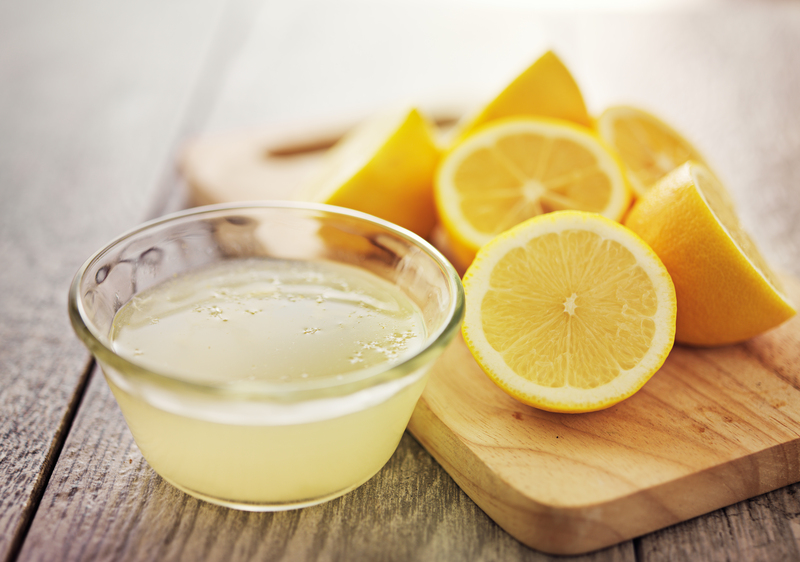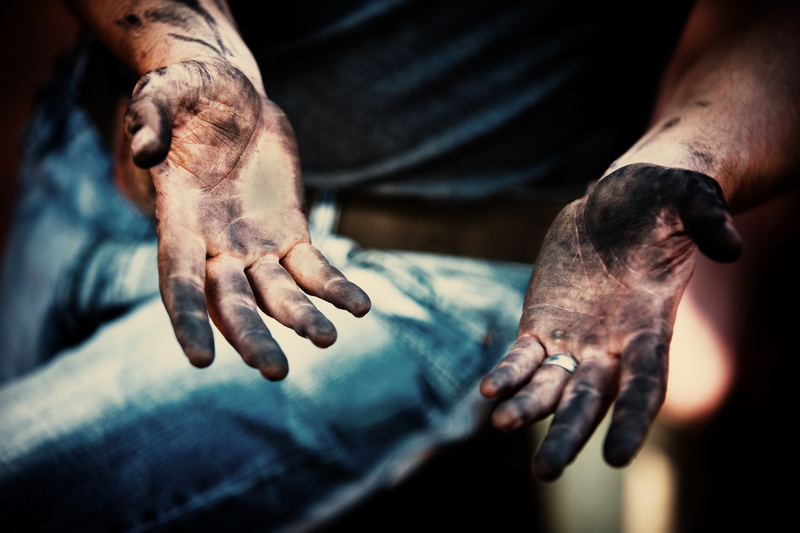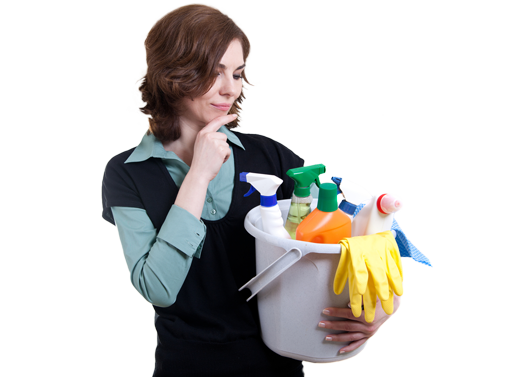The Science Behind Getting Streak-Free Windows Every Time
Posted on 22/05/2025
The Science Behind Getting Streak-Free Windows Every Time
Achieving streak-free windows is a goal for both homeowners and professionals alike. Windows that are clean and clear boost your home's curb appeal, optimize natural light, and create a welcoming environment. But window cleaning often turns into a battle against annoying streaks. The good news? With some knowledge of science and cleaning techniques, you can master the art of getting sparkly, clear windows without any frustration. Let's explore the science and practical strategies for achieving streak-free windows every time you clean.

Understanding Why Streaks Happen
Before diving into the solutions, you need to understand the causes of streaks. Here are the main culprits behind those persistent marks:
- Improper Cleaning Solution Ratios: Using too much soap or cleaner can leave residue.
- Hard Water: High mineral content in water leaves spots and streaks as it dries.
- Poor-Quality Tools: Dirty rags, low-grade squeegees, and rough towels spread dirt or lint.
- Incorrect Technique: Circular wiping, missed spots, and allowing the solution to dry too quickly can create uneven patches.
- Environmental Factors: Cleaning windows in direct sunlight or during windy days can make the solution dry before you wipe it, resulting in streaks.
The Role of Chemistry in Streak Formation
The chemistry of water, glass, and cleaning agents underpins the streak problem. Most streaks are caused by:
- Surfactant Residues: Soaps and detergents contain surfactants, which reduce surface tension, but if not rinsed away completely, they dry as visible lines.
- Mineral Deposits: Hard water contains minerals like calcium and magnesium, which leave chalky streaks.
- Dirt Redistribution: If dirt isn't fully lifted and removed, it gets smeared across the surface, creating dull, streaky patches.
Understanding these factors helps you choose the right methods for streak-free window cleaning.
Choosing the Best Cleaning Solution for Streak-Free Glass
The cleaning product you choose matters. Not all window cleansers are alike. The ideal window cleaning solution should:
- Break Down Dirt: Effectively dissolve fingerprints, dust, and organic residues without harsh abrasives.
- Evaporate Evenly: Leave minimal residue after wiping for crystal-clear windows.
- Work With Your Water: Counteract hard water or mineral issues if required.
DIY vs. Commercial Cleaners
- Homemade Solutions: A popular recipe for achieving streak-free windows is a mixture of 1 part distilled white vinegar, 1 part distilled water, and a drop of dish soap. Vinegar helps break down film and water spots, while soap tackles grease.
- Commercial Glass Cleaners: These usually contain ammonia or specialized surfactants to evaporate quickly and resist streaking.
Pro tip: Always use distilled water--especially if you have hard tap water. Distilled water won't leave behind minerals that cause streaks.
The Secret to Streak-Free Windows: The Right Tools
Professional window cleaners swear by a specific set of tools, and for good reason.
- Microfiber Cloths: The fibers trap dirt and remove cleaner without lint or static. Never use paper towels--they often shed fibers and worsen streaking.
- Quality Squeegee: A rubber-bladed squeegee removes solution uniformly and prevents streaks. Replace blades regularly for optimal results.
- Scrubber or Sponge: For initial dirt removal on very dusty or grimy glass.
- Bucket with Large Opening: Makes it easy to rinse tools thoroughly.
Combining the best equipment with proper cleaning technique is crucial for ensuring a streak-free finish.
The Importance of Microfiber
Microfiber cloths outperform cotton because their unique structure attracts and holds dirt at a microscopic level. They're non-abrasive, highly absorbent, and leave no fibers behind, making them essential for streak-free glass.
The Science-Backed Method for Cleaning Streak-Free Windows
Let's break down the optimal window cleaning process, rooted in scientific principles and the habits of professional cleaners around the world:
Step-by-Step Guide to Streak-Free Windows
-
Start on a Cloudy Day:
The best time to clean windows is when there's no direct sunlight on the glass. Sunlight accelerates drying, which can leave solution marks. -
Remove Loose Dust and Debris:
Dust frames, sills, and screens before wetting the glass. This prevents dirt turning into muddy smears. -
Apply Your Cleaning Solution Generously:
Use a spray bottle or sponge to apply your cleaner, starting at the top and working downward. -
Scrub Gently but Thoroughly:
Use a soft scrubber or microfiber cloth in overlapping, vertical, or horizontal strokes to dislodge grime. Avoid circular motions, which can create swirl marks. -
Squeegee Skillfully:
With a sharp, clean blade, wipe in a continuous motion, overlapping slightly with each stroke. Wipe the squeegee blade between passes. -
Buff for Perfection:
Finish with a dry microfiber cloth to catch any leftover droplets or streaks. Focus on the window's edges--where solution often hides.
Advanced Tips for the Streak-Free Expert
- Use two different cloths: One for the initial cleaning, the other for the buff finish.
- Change out dirty water, rags, and squeegee blades regularly to avoid spreading grime.
- Clean from top to bottom--gravity pulls the solution down, so upper streaks can be wiped as you go.
- Don't neglect window frames and tracks--they harbor dust that resettles on your glass.
How Weather and Environmental Conditions Affect Window Cleaning
The climate plays a significant part in your quest for streak-free windows:
- Humidity: Higher humidity slows evaporation, giving you more time to wipe.
- Temperature: Hot or sunny days cause rapid drying, making streaking more likely.
- Wind: Wind accelerates evaporation and may blow dust onto just-cleaned surfaces.
In summary: Cleansing in the wrong weather results in streaks--plan your cleaning accordingly.
Myths and Misconceptions About Streak-Free Windows
-
Myth: Newspaper is the best tool.
Fact: Ink transfers to hands and frames, and modern papers are less absorbent. Microfiber is superior for a streak-free finish. -
Myth: More soap means cleaner windows.
Fact: Excess soap leaves residue. Use the smallest amount needed. -
Myth: Any old towel will work.
Fact: Towels deposit lint and fibers, which contribute to streaks and hazy appearances.
Maintaining Streak-Free Windows for Longer
Achieving a flawless finish is only half the battle; keeping your windows streak-free is the next challenge.
Preventive Maintenance Tips
- Dust window sills and frames frequently to keep airborne particles from resettling on clean glass.
- Clean windows every 1-3 months for residences and more frequently for stores or high-traffic areas.
- Apply a hydrophobic coating or rain repellent to exterior panes--these repel water and dirt, helping maintain clarity longer.
- For coastal or urban environments, be proactive--industrial pollutants and salt require more regular attention.
Special Considerations: Dealing With Different Types of Glass
Not all windows are created equal! Different types of glass require tailored techniques to maintain their streak-free brilliance.
Tinted Windows
- Avoid ammonia-based cleaners, which may damage the tint film. Use a vinegar-water solution or specialty cleansers labeled "safe for tint."
Textured or Frosted Glass
- Use a soft brush or sponge to reach crevices. Wipe gently and follow with a microfiber cloth.
Skylights and Oversized Windows
- Extendable squeegees and spray bottles with angled nozzles help you reach tall or awkward panes safely.

Frequently Asked Questions About Streak-Free Windows
-
Why do my windows look streaky even after cleaning?
This is usually a result of excess residue, dirty water or tools, or cleaning in the wrong weather conditions. -
Is vinegar safe for all window types?
Vinegar is safe for standard glass but avoid using it on tinted windows--choose an ammonia-free cleaner for those. -
Can I use a steam cleaner?
Steam can be effective on non-tinted glass, but be cautious on older windows and always use distilled water to prevent scale from forming streaks.
Conclusion: Mastering the Art and Science of Streak-Free Windows
Achieving streak-free glass is not luck--it's science, best practices, and quality equipment combined. Choose the right cleaner, use distilled water, invest in microfiber and a professional squeegee, avoid direct sunlight, and take your time with each stroke.
Window cleaning is both a science and an art form. When you apply evidence-based methods, understand the chemistry at play, and follow tried-and-true techniques, you'll find that getting streak-free windows every time isn't just possible--it's almost inevitable.
For the best and longest-lasting results, integrate window cleaning into your regular home maintenance routine. Keep your tools in top shape, watch the weather, and enjoy the increased clarity and beauty of your streak-free views.





